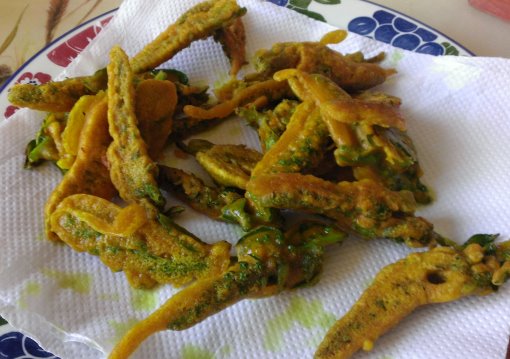Sea Beet
By Mike on Friday, April 4, 2008, 23:08 - Permalink
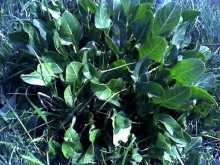 April 04 2008 - A lovely spring day, so I went out for a walk on the beach behind my workplace. I found some excellent Sea Beet.
April 04 2008 - A lovely spring day, so I went out for a walk on the beach behind my workplace. I found some excellent Sea Beet.
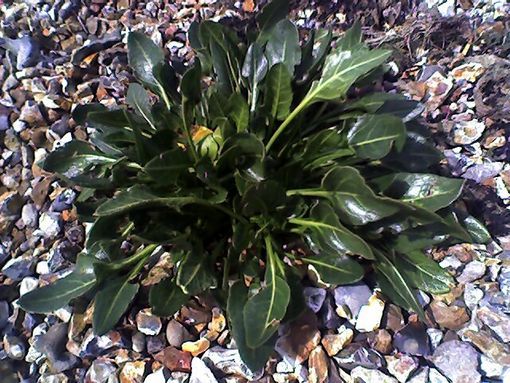
What is Sea Beet?
Beta vulgaris ssp. maritima - This plant is in fact the wild ancestor of:
It's a very common coastal plant all over the UK and Europe. In appearance, it's quite variable - some of this is innate/genetic, but there is often also a fair bit of variability due to habitat - plants growing right on the exposed shore may be wiry little tufts of tattered leaves, atop gnarled woody rootstocks, or they may be great tangled bushes of little succulent leaves with long stalks.
A few metres inland, amongst grass, dunes or scrub, specimens tend to be larger and fresher in leaf - although even here, there's variability - from great clumps of taller, delicate leaves, to robust rosettes of thick, rubbery ones.
Pictures below: A typical specimen from the exposed shore vs another found in grass just 10 metres inland
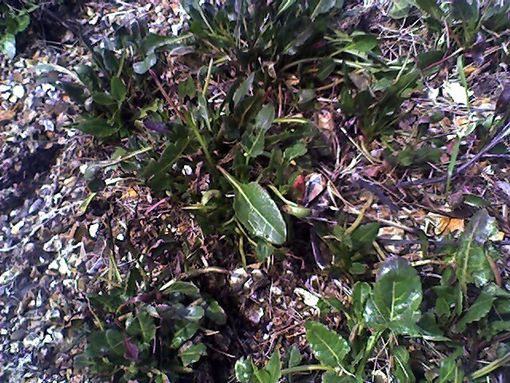

Picking Sea beet
In my experience - and I hope it's borne out by the photos above - the plants with leaves best suited for the table are those growing in slightly more sheltered spots a little way away from the shore.
It's tempting, in the sight of all this free food, just to wade in and start tearing up great handfuls of it - but this is likely to lead to disappointment back in the kitchen. These plants have to endure quite punishing conditions - as a result, many of their leaves will be damaged, or may have toughened beyond palatability.
Take your time and select only intact leaves from the younger parts of the plant - this might seem time consuming, but this really is the best time to be applying discernment - the alternative is a lot of - even more time consuming - picking, sorting, trimming and waste back at home.
Leaving the tatty older leaves on the plant is doing it a favour too.
Sea Beet plants are by no means rare treasures, but there's no point doing any more damage to them than is strictly necessary - so take only what you will eat.
In The Kitchen
In the kitchen, Sea Beet has all of the good attributes of spinach, with none of the bad ones.
I think it carries a slightly salty marine tang that enhances the already great flavour - and it cooks to a tender, but not limp or slimy texture.
 This is what I gathered - about half a pound in weight - and nearly all nice, fresh, intact leaves - very little to be discarded - here's all the waste:
This is what I gathered - about half a pound in weight - and nearly all nice, fresh, intact leaves - very little to be discarded - here's all the waste:
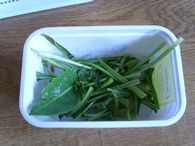 -and even then, it wasn't really waste - it went to feed the guinea pigs.
-and even then, it wasn't really waste - it went to feed the guinea pigs.
Cooking
It can be used anywhere in place of spinach - it's especially good with eggs and cheese in omelettes or quiches.
I also like it just as a vegetable, cooked as follows:
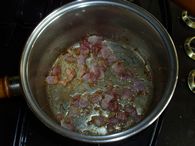 Fry off some small pieces of bacon in a saucepan with a lid
Fry off some small pieces of bacon in a saucepan with a lid
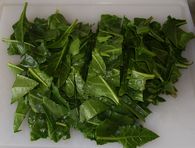 Rinse the leaves thoroughly, pick out any bad ones and trim off any tough stalks. Chop coarsely.
Rinse the leaves thoroughly, pick out any bad ones and trim off any tough stalks. Chop coarsely.
 Turn the heat right up under the pan, then dump in the chopped leaves. Stir briefly and put the lid on.
Turn the heat right up under the pan, then dump in the chopped leaves. Stir briefly and put the lid on.
Cook for no more than a few minutes - lifting the lid and stirring the contents occasionally. The residual water from rinsing is all that is needed to steam-cook it.
When the leaves have softened - but are still vibrant green - it's ready!
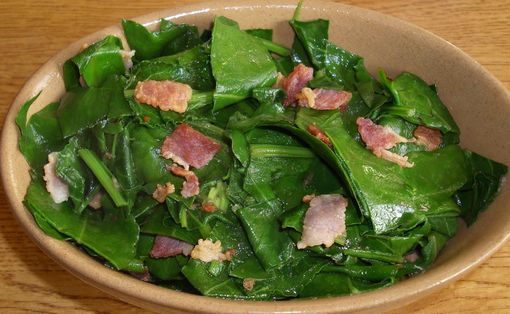
Update - June 2013 - Sea Beet Flowers
 Let's try something a little bit new - the flowering tips of sea beet.
Let's try something a little bit new - the flowering tips of sea beet.
A Closer Look
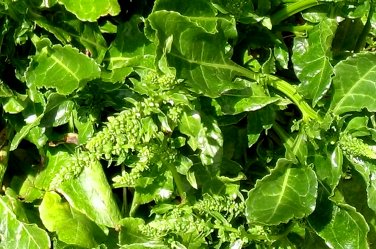 In early spring, the plant is all leaves - and this is a great time to pick it as a green vegetable.
In early spring, the plant is all leaves - and this is a great time to pick it as a green vegetable.
Later on, in early summer, it produces a flowering spike at the end of each stem - there are still good leaves to be found on the plant, but I couldn't help wondering about the edibility of these flowering shoots.
I caught them right at the point where they were fully-formed, but not yet run to seed.
 The whole plant is edible, of course, so I knew they would be OK - it was more a question of flavour and texture - so I picked one of the flower heads and tasted it raw right there on the beach.
The whole plant is edible, of course, so I knew they would be OK - it was more a question of flavour and texture - so I picked one of the flower heads and tasted it raw right there on the beach.
It was OK - not bitter, not stringy, just crisp, green salty spinachy-ness, with an interesting extra bit of crunch and texture.
So I picked a couple of dozen pieces and took them home for experimentation.
If In Doubt, Batter
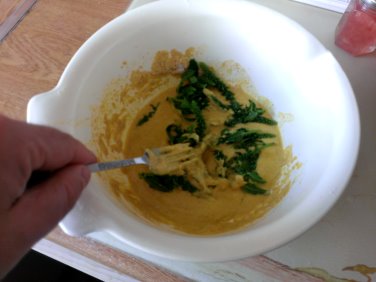 I won't deny, one of my favourite things to do with wild green vegetables is to dip them in batter and fry them.
I won't deny, one of my favourite things to do with wild green vegetables is to dip them in batter and fry them.
The sea beet inflorescences seemed a perfect candidate for this treatment - the intricate structure holds a good coating of batter.
(The batter, by the way, was just a cupful of plain flour, a heaped teaspoon of curry powder, a little extra Turmeric and enough water to make it into a thick semi-liquid).
Shallow fried in a little oil, the battered sea beet tops were just perfect - crispy, spicy little packages of delicate vegetable loveliness - I reckon if these tops had just been steamed and served as a vegetable, they might have been a bit granular and bitty in the mouth, but the batter overcomes this perfectly.
